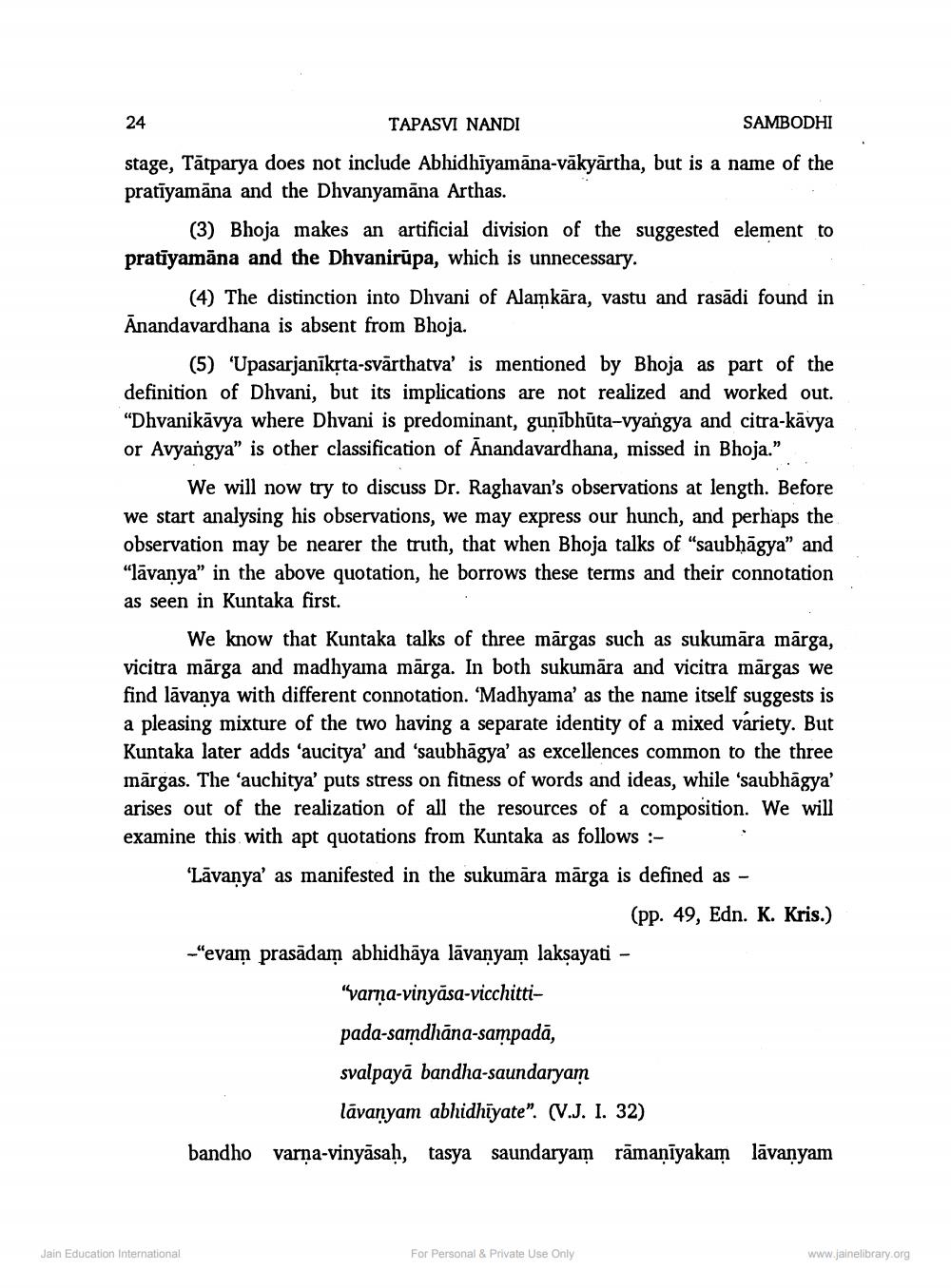________________
TAPASVI NANDI
SAMBODHI
stage, Tātparya does not include Abhidhīyamāna-vākyārtha, but is a name of the pratīyamāna and the Dhvanyamāna Arthas.
(3) Bhoja makes an artificial division of the suggested element to pratiyamāna and the Dhvanirūpa, which is unnecessary.
(4) The distinction into Dhvani of Alamkāra, vastu and rasādi found in Anandavardhana is absent from Bhoja.
(5) 'Upasarjanīksta-svārthatva' is mentioned by Bhoja as part of the definition of Dhvani, but its implications are not realized and worked out. “Dhvanikāvya where Dhvani is predominant, gunībhūta-vyañgya and citra-kāvya or Avyangya” is other classification of Anandavardhana, missed in Bhoja."
We will now try to discuss Dr. Raghavan's observations at length. Before we start analysing his observations, we may express our hunch, and perhaps the observation may be nearer the truth, that when Bhoja talks of "saubhāgya” and "lāvanya" in the above quotation, he borrows these terms and their connotation as seen in Kuntaka first.
We know that Kuntaka talks of three mārgas such as sukumāra mārga, vicitra mārga and madhyama mārga. In both sukumāra and vicitra mārgas we find lāvanya with different connotation. “Madhyama' as the name itself suggests is a pleasing mixture of the two having a separate identity of a mixed variety. But Kuntaka later adds 'aucitya' and 'saubhāgya' as excellences common to the three mārgas. The 'auchitya' puts stress on fitness of words and ideas, while 'saubhagya' arises out of the realization of all the resources of a composition. We will examine this with apt quotations from Kuntaka as follows :'Lāvanya' as manifested in the sukumāra mārga is defined as -
(pp. 49, Edn. K. Kris.)
-"evam prasādam abhidhāya lāvanyam laksayati -
"varna-vinyāsa-vicchitti
pada-samdhāna-sampadā,
svalpayā bandha-saundaryam
lāvanyam abhidhīyate”. (V.J. I. 32) varņa-vinyāsaḥ, tasya saundaryam rāmaṇīyakam
bandho
lāvanyam
Jain Education International
For Personal & Private Use Only
www.jainelibrary.org




